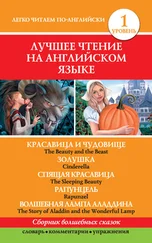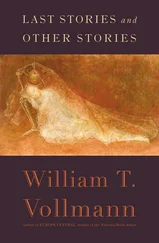152: “The possession of either a vagina that nature made…” — Stryker and Whittle, p. 64 (Harold Garfinkel, “Passing and the Managed Achievement of Sex Status in an ‘Intersexed’ Person”).
152: “Let the glow of Radha’s breasts endure!” — Jayadeva, p. 35 (Miller’s intro., citing the Siddhahemasabdanusana of Hemacandra (A.D. 1088–1172).
152: Haiku on the old-lady cherry — Quoted in Ueda, Basho , p. 38.
152: “Is this Komachi that once was a bright flower?” — Waley, The No Plays of Japan , p. 156 (“Sotoba Komachi”), excerpt slightly abridged.
152: Footnote: “I suppose a fool like you thinks every beautiful woman gets ugly as soon as she grows old…” — Mishima, Five Modern No Plays , p. 13 (“Sotoba Komachi”).
153: “Never again will I come as an angry ghost.” — Waley, The No Plays of Japan , p. 189 (“Aoi no Uye”).
153: “Blossoming sleeves…” + “Pine winds tear plantain-leaf-frail dream…” — Brazell, pp. 155, 157 (“Izutsu,” trans. Karen Brazell).
154: Basho’s haiku on cloth-pounding — Quoted in Ueda, op. cit., p. 53.
154: The wise Sanskrit poet’s advice to his heroine — Jayadeva, p. 92 (V, stanza 8).
154: “A flower shows its beauty as it blooms…” — Zeami, p. 130 (“Shugyoku tokka”).
154: Masami and Fukutaro — Interviewed in Kanazawa, January 2008.
155: “… not actually people… “ — Tyler, pp. 190–91 (introduction to “Matsukaze”).
155: Malraux: Artists are “conditioned” by works of art — Op. cit., p. 281.
155: “The art of female impersonation has refined feminine beauty…” — Toita and Yasuda, p. 110.
155: Zeami’s prohibition of strength in female impersonation — Hare, p. 33.
155: “Abandon any detailed stress on his physical movements…” — Zeami, p. 141 (“Shugyoko tokka”).
155: Remarks of Tamura Toshiko — From Kano, p. 19.
156: Conversation with the Kyoto geisha — Interview with Kofumi-san, at Imamura-san’s teahouse in Gion, Kyoto, October 2006.
156: Yamamura Yoko — Original interview of 2002.
156: Prohibition on actresses for “Okina” — Rath, p. 230.
157: The transsexual’s insecurity which once led him to “hyperfeminise” himself — Kane, pp. 128–29.
157: “She’s calling attention to a shapely ankle…” — Hanna, p. 153 (quoting Marcia Siegel).
157: Effect of bulkier female pelvis on hip swing — Ibid., p. 158.
157: Simulation of the human female’s greater elbow angle — Morris, p. 118.
158: Shared octave of male and female voice, and strategy for making the former approximate the latter — Deep Stealth Productions, disk 1, about minute 37. The male-to-female transsexual is recommended to pitch his voice an octave higher.
158: Footnote: “After you’ve hit puberty… that’s when your vocal chords thicken, and it’s irreversible.” Ibid., approx. minute 18.
158: Footnote: Source of “Izutsu” — Tales of Ise , p. 64 (Dan XXIII).
158: “Fundamentally elusive fantasies of the imagination.” — Feldman and Gordon (introduction, by Gordon and Feldman). A biologist who spent more than nine hundred hours in singles bars and other venues of courtship classified the following “distinct steps in male-female attraction: approach, look, turn, touch and synchronized movement” (Hanna, p. 157). I believe this simply because it is prosaic ; it might even be what some insects do. Can grace be dissected into these components?
159: “The life and spirit of Noh…” — Zeami, p. 64.
159: Footnote on “Venus rings” — Information from Getty Museum, p. 30.
159: Remarks of Mr. Mikata on neutrality in playing female roles — From Kyoto interview of October 2006.
159: “The true heart is not masculine…” — Shirane, p. 31 (Motoori Norinaga, Shibun yoryo , 1763).
160: “I love refinement” + “And beauty and light are for me the same…” — Barnstone, p. 91 (Sappho, “Age and Light”).
160: Description of the voluminous S-shape of a standing courtesan in a narrow vertical ukiyo-e print — After the Ota Memorial Museum of Art (2006), p. 38 (34: Utagawa Toyokiyo, “Standing Courtesan”).
160: Description of Stiff White Ladies — After Gimbutas, plate 14; p. 187 (“the symbol closest to death…”), p. 198 (“supernatural vulva”), pp. 199–207, p. 316 (“nothing to do with sexuality”).
160: Footnote: “ ‘Superfeminine’… supersoft…” — Feldman and Gordon, p. 35 (James Davidson, “The Greek Courtesan and the Art of the Present”).
161: Description of Tyche — From Getty Museum, pp. 28–29.
161: Description of seventeenth-century ko-omote mask — From a specimen seen in the Kanazawa Noh Museum, January 2008.
161: Footnote: “But she was without question a beautiful woman…” — Lady Nijo, pp. 84–85.
161: Kanze Hisao: Noh woman-masks pass “beyond all specific human expression…” — Nakanishi and Komma, p. 99.
162: “The beauty of the Noh lies in the concentration.” — Pound and Fenollosa, p. 69.
162: Remarks of Bando Tamasaburo — Peabody Museum, p. 139 (Peter M. Grilli, “Geisha on Stage and Screen”).
162: “Savage cacao…” — Marie Claire , vol. 15, no. 4 (April 2008), p. 47 (Sephora ad for Ojon Tawaka Ancient Tribal Rejuvenating Cream, $65).
162: “First you have to be that role yourself…” — Mr. Kanze Hideo, same interview of May 2005.
162: Recapitulation of mai dance, and Noh posture, especially for female roles — After Cavaye, Griffith and Senda, pp. 53, 179.
163: Footnote: Walking-steps of seventeenth-century courtesans — Saikaku, pp. 80 (“The Almanac Maker’s Tale”), 138 (“The Life of an Amorous Woman”), 306 and 339 (notes 105 and 377).
163: Bando Tamasaburo on the erotic quality of feminine discomfort — Hanna, p. 80.
163: “Mincingly and decoratively…” — Ibid., p. 162.
163: Similar requirements for geisha dance — Feldman and Gordon, p. 233 (Lesley Downer, “The City Geisha and Their Role in Modern Japan: Anomaly and Artiste?”).
164: Remarks in text and accompanying footnote on Style A and B Cycladic figurines — Getz-Gentle, p. 38.
164: The drawing instructor — Michael Markowitz, interviewed in San Francisco, July 2007.
164: “Movement metaphors distinguish male from female.” — Hanna, p. 77.
165: Table of “stereotypical nonverbal gender behavior” — Ibid., pp. 160–61. When I asked the Japanese-American woman quoted in “Crossing the Abyss” for her definition of grace, she replied: “It may come from spirit or soul. When you look at somebody’s face, you can figure out the personality, kind of. A soul is something very fundamental. Personality is something acquired later. Personality changes from time to time, based on age and environment. But soul may not be affected.”
165: “Completed only when beauty has nothing more to offer.” — Nehamas, p. 105.
12: RAINBOW SKIRTS
166: “Tresses like a cloud, face like a flower” — Owen, p. 442 (Bo Ju-yi, “Song of Lasting Pain”).
166: “As lovely as jade…” — Feldman and Gordon, p. 80 (Judith T. Zeitlin, “ ‘Notes of Flesh’ and the Courtesan’s Song in Seventeenth-Century China”).
166: “His Majesty knew that it could not be avoided…” — Owen, p. 450 (Chen Hong, “An Account to Go with the ‘Song of Lasting Pain’ ”).
168: Lady Yang’s “helplessness so charming” — Loc. cit.
168: Bo Ju-yi’s descriptions of Lady Yang’s charms and accoutrements — Ibid., p. 444 (“Song of Lasting Pain”). But near the beginning of the twelfth century, the Chinese poet Li Ch’ing-chao compares the loveliness of white chrysanthemums to “Yang Kuei-fei flushed with wine,” Lady Yang being the loser. — Owen, p. 15 (“The Beauty of White Chrysanthemums”).
Читать дальше












